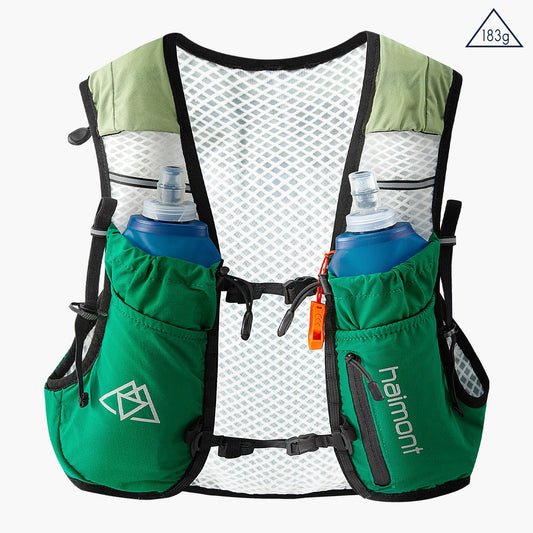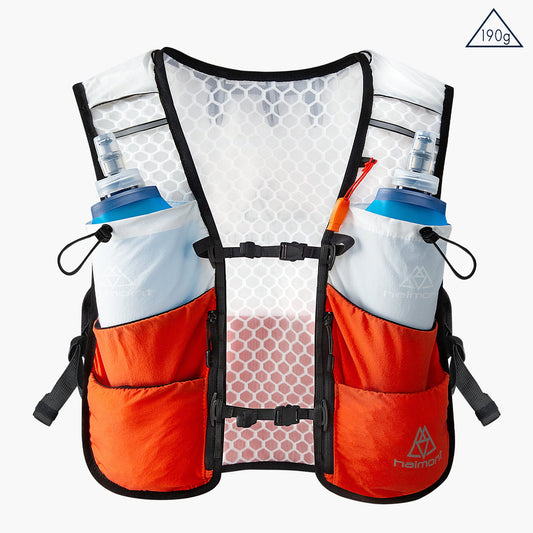How to Properly Use Poles In Trail Running
Many runners swear by using poles for trail running. Compared to the proper footwear, poles aren’t a must on the trails but they do have a lot of definitive advantages. We’ll advise you when and how to properly use trail running poles and what you need to pay attention to in a purchase. Here’s how to find the right trail running poles to make your running easier!

Trail running with poles: The advantages
Trail running with or without poles? The decision for or against poles on the mountain has become a fundamental question. Many runners decline categorically to use poles. Others on the other hand would never compete in a race without them. What is clear: Poles offer a lot of advantages in particular in longer races or on technical sections. They take the stress off muscles and joints and in the process help stave off fatigue. With the correct pole technique, you can save valuable energy and move more efficiently. No wonder, then, that as the level of trail running grows, so too does the number of pole aficionados in trail running.
You need, however, to pay attention to a few details to benefit from the numerous benefits offered. Because it can only work smoothly on the trails with the proper technique and the correct pole length.
When do you need trail running poles?
Poles are especially wise on uphills to enable you to climb more relaxed, faster, and more efficiently. On steep sections or over high steps, they offer quite a bit of forward propulsion and the strain on legs is minimized. You can move more upright and have better balance, especially on slippery surfaces. On runnable climbs you can get into an even, smooth rhythm easier with the help of poles.
On downhills or flat trails, it is best however to pack away the poles to take stress off your upper body. The focus here should be on footwork. Trail running poles can minimize strain on the downhill and can be used for better stability only when your legs are extremely tired, and the terrain is especially steep and technical.
Running with poles: Proper technique
Fundamentally, it is essential to always keep your hands in the straps when using poles. Only in this way do you have the necessary stability and you can then also truly transfer the energy from the poles to your running gait.
Once you are holding the poles correctly are you able to focus on technique. At the same time, one can consider two different pole techniques.
1. Contralateral technique / Alternating
In this method, trail running poles are always alternated and planted cross-diagonally to the legs. That means when the left leg is forward, the right pole is planted in coordination in the back. When the right leg steps forward, then the left pole is planted so you can then push from behind. This technique is particularly effective when you are running quickly up a moderate incline.
2. Double pole technique
For very steep terrain or when pushing up bigger steps or up and over obstacles, it is best to use the double pole technique. To do this, you plant both poles parallel to each other and farther away from the body’s center of gravity – ideally, even on the step you are looking to negotiate. Then you push yourself upward with aid from the poles. With this technique, you really use the entire body and the large musculature to propel yourself faster and more efficiently upward and to help relieve the stress on your legs.
What length should your poles be?
The correct pole length is enormously important. Only with it can you properly benefit from all the advantages of a pole and use them efficiently. As a rule of thumb use this calculation to determine the right pole length: Height x 0.7 = pole length.

Different types of trail running poles are available: Either with a fixed length or with an adjustable length. The last type are so-called telescoping or variable-length poles with a twist mechanism or speed lock. Height-adjustable poles offer the advantage that can be shortened on very steep terrain to better push yourself along. Because of the locking mechanisms, however, they are as a rule somewhat heavier than fixed-length poles.
Pro runners count every gram in races. That’s why they often prefer to use fixed-length trail running poles for short, steep mountain runs. For novices and recreational runners, we recommend poles that can be adjusted for length. With variable length poles, you can remain flexible. Because in the end it’s really a matter of personal taste whether a runner prefers poles that are then somewhat longer or somewhat shorter.
Foldable poles, material, and weight
The selection of trail running poles is large. Naturally, there are poles not only in various lengths but also made of different materials and with different adjustment mechanisms. Especially practical for trail running are foldable poles that can be folded up in no time, much like tent poles. Foldable poles are also available either with a fixed length or adjustable length. The advantage: When you don’t need the foldable poles, they can be stowed compactly in your pack.
When it comes to materials there are also big differences: Carbon fiber poles are especially light and sturdy but are more expensive to purchase. More cost-effective are trail running poles made of aluminum or a composite of carbon fiber and aluminum, which are then correspondingly heavier.
How do you stow poles best in a backpack?
Where do you put them when you don’t need them? This question is for many runners the decisive reason why they forgo taking poles with them. But that doesn’t have to be the case! Ultimately, modern trail running packs offer perfect intelligent solutions for that.
During a trail run and in particular a race there are various climbs and downhills to negotiate. To do so, the poles must be quickly stowed – ideally without need to stop to do that. In the main compartment of pack there is usually very little space. That means it is preferable to stow the poles on the outside of a pack. That works the best and most quickly with a quiver like Robin Hood used for his arrows. The opening is as a rule rigid so poles can be pushed into it easier during a run. A elastic drawcord allows the lower part of a quiver to be compressed so the poles don’t bob back and forth so much.  Most higher-end trail running packs also feature additional options for attaching poles, such as diagonally at the back or as a V using elastic straps with stoppers. You decide what you prefer and which version you can manage better on the trails. Over short runs, you also just hold the poles in your hand.
Most higher-end trail running packs also feature additional options for attaching poles, such as diagonally at the back or as a V using elastic straps with stoppers. You decide what you prefer and which version you can manage better on the trails. Over short runs, you also just hold the poles in your hand.
Have we made you curious? Then stop into our shop to find the best trail running poles for you to have more fun on the trails!










